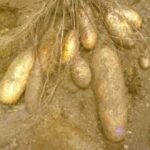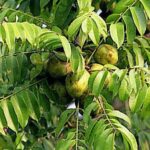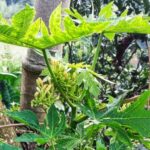There are several local names for the tree and fruits of Artocarpus odoratissimus. In English, it is simply called ‘Marang’, which is based on the Philippines’ common name for this fruit. Originally endemic to the region around Mindanao, Sarawak, Kalimantan, and Palawan, it is nowadays cultivated in many Southeast-Asian countries, and it can grow wild in areas 15 degrees north and south of the equator.
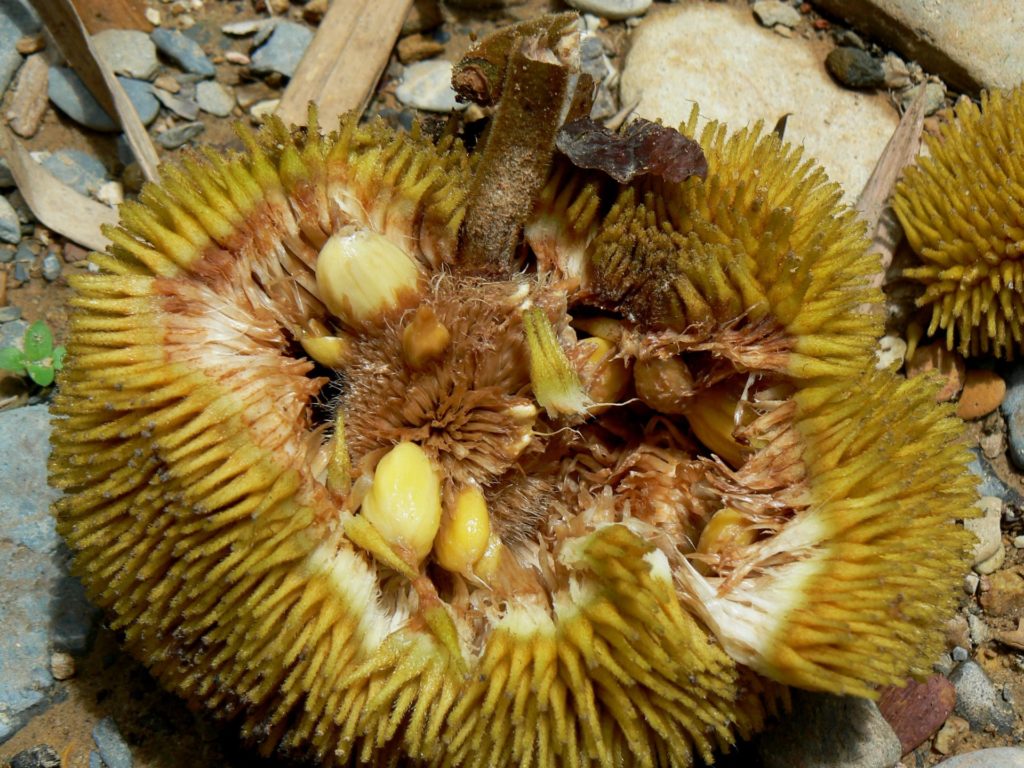
Marangs are related to Breadfruits (Artocarpus altilis) and Jackfruits (Artocarpus heterophyllus); all three of them belong to the same genera Artocarpus. Size wise they are right in the middle between smaller breadfruits and larger jackfruits. But Marang is way smellier than both others, therefore appropriately called A. odoratissimus.
Finding and harvesting Marang fruits
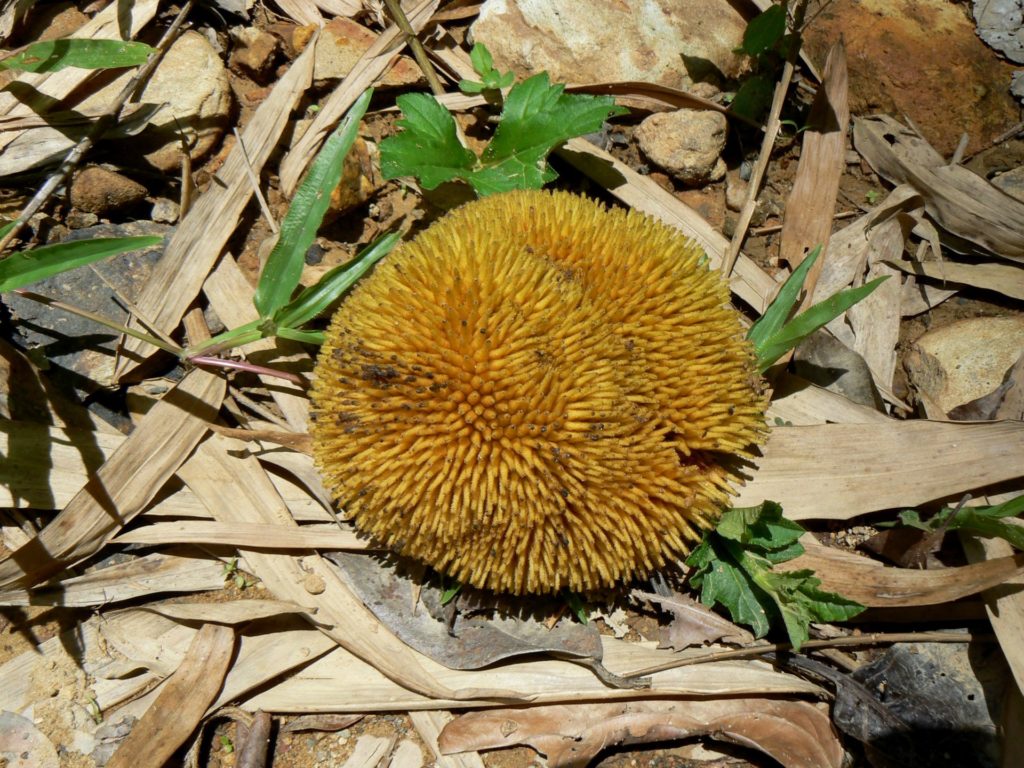
Harvesting time is normally in September-October but can be repeated in December. Fruits found lying on the ground are yellow in color and over-ripe. They are normally not eaten anymore, as their taste and smell are very intense. And nearly always they break up on ground impact, as the thick rind is at this stage quite soft. After about one day lying open on the ground, they start fermenting. But, in the rainforest, they are a good indicator of fruiting Marang trees.
People harvest the still green fruits still hanging on the trees. As the trees can get up to 25 meters high and are difficult to climb in the wild, long bamboo poles are used with an attached knife at the end to cut the fruit stem. The falling fruits are caught in a kind of towel, preventing them from hitting the ground with full force and thus keeping them undamaged.
How to eat Marang fruits

For eating, the green rind can be pulled open easily and the plum-sized fruits (drupes) inside, which are white, can be eaten as they are. Taste and smell can only be described subjectively. In my opinion, the taste of the fruit flesh is very pleasant sweetish-fruity-sour. But it has a whiff of Jackfruit smell, which I don’t like too much, as it reminds me of stinky tofu. The calorific value of Marang fruit flesh varies considerably. Depending on water content and degree of ripeness, but will be around 100 calories per 100 g fresh fruit.
Use of Marang seeds
The remaining seed got the size of a small hazelnut, which is too big to swallow. It should be washed clean, sun-dried and thereafter slightly roasted. They have a crunchy bite like roasted macadamias, are oily, and have an earthy-grassy taste (at least for my taste buds). The seeds can also be cooked in curries just like jackfruit seeds.
Lessons learned about Marang fruits
- Yellow Marang fruits on the ground in Evergreen tropical forests are a good indicator of delicious green ones still on the tree.
- Ripe, green fruits are easy to open, and one fruit has enough fruit flesh and -seeds for one person’s meal
- The smell of Marang fruit is an acquired one but outweighed by its delicious taste.
.



